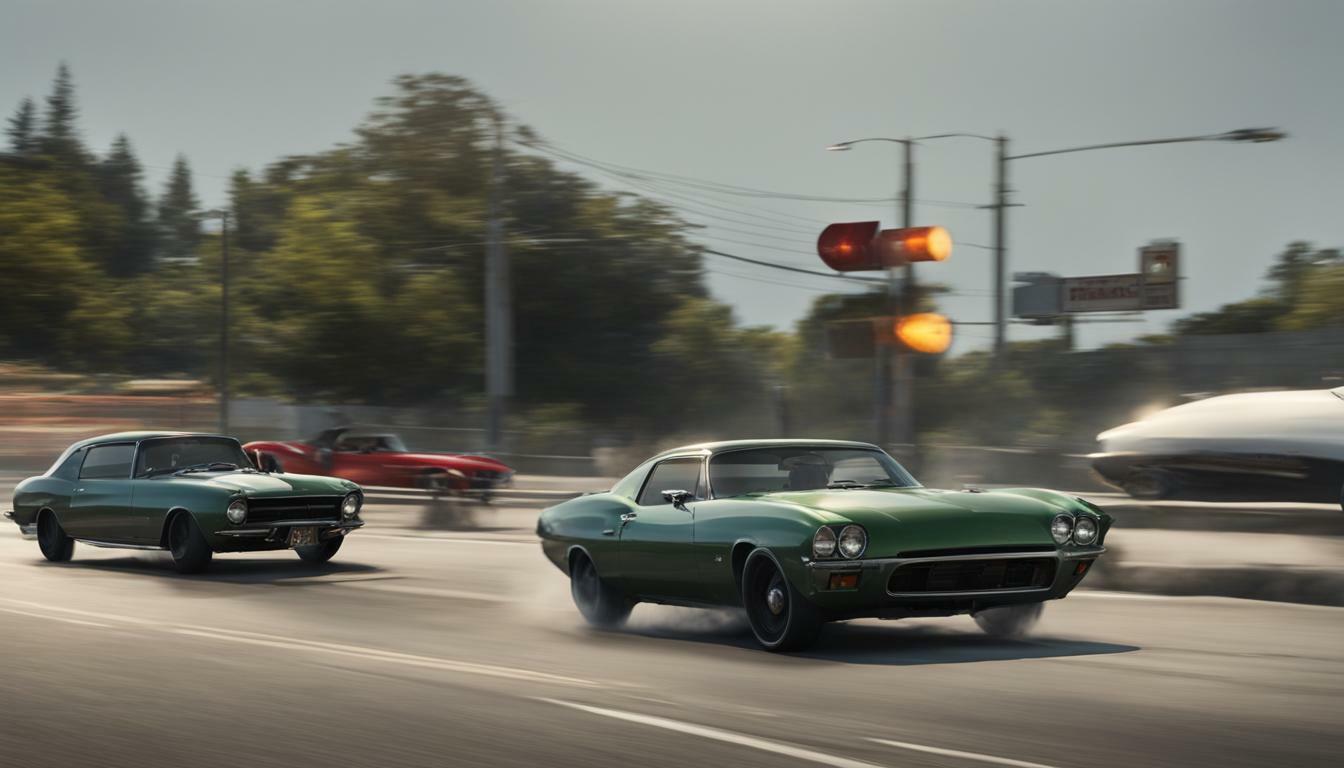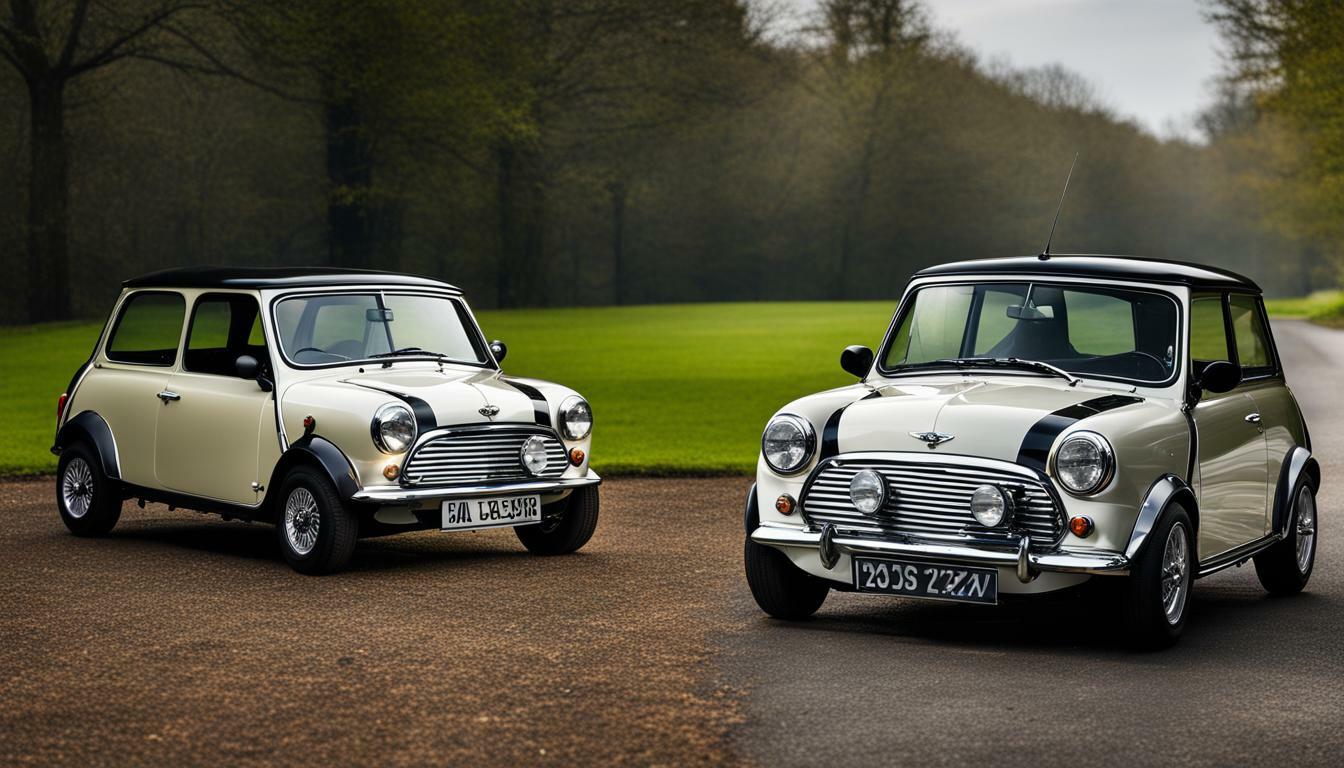As a driver, you rely on your car’s braking system to provide you with the stopping power necessary to keep you safe on the road. Brakes are an essential component of any vehicle, and it’s crucial to understand the differences between various systems. Two of the most common types of brakes are drum brakes and disc brakes. In this article, we’ll explore the differences between these systems in terms of stopping distance.
Stopping distance refers to the distance traveled by a vehicle from the moment the driver hits the brakes to the point where the car comes to a complete stop. It’s influenced by several factors, including the type of braking system used.
Drum brakes and disc brakes differ in their design, construction, and mechanism, which affects their stopping power. Understanding these differences can help you make an informed decision about the best braking system for your needs.
Key Takeaways
- Drum brakes and disc brakes are two common types of braking systems used in cars.
- The stopping distance of a vehicle is affected by the type of braking system.
- Drum brakes and disc brakes differ in their design, construction, and mechanism, which affects their stopping power.
Understanding Drum Brakes
Drum brakes are a common type of automotive braking system that have been used for many years. The brake mechanism consists of a hollow, drum-shaped component, which houses the brake shoes and other components.
The drum brake system exerts braking force on the car’s wheels through the brake shoes. When the brake pedal is pressed, the brake shoes press against the inside of the drum, generating friction and slowing the car down. The brake shoes are mounted on a stationary backing plate, which is attached to the axle and does not rotate with the wheel.
Drum brakes are known for their durability and reliability, and they are widely used in heavy-duty vehicles such as trucks and buses. However, they have some limitations in terms of brake performance, particularly in terms of stopping distance.
The performance of drum brakes is influenced by several factors, including the brake shoe material, the size of the drum, and the design of the brake mechanism. In general, drum brakes are less effective at dissipating heat than disc brakes, which can lead to brake fade and reduced stopping power.
In addition, drum brakes tend to be heavier and more complex than disc brakes, which can lead to greater wear and tear over time. Despite these limitations, drum brakes continue to be used extensively in the automotive industry, due to their cost-effectiveness and reliability.
Unveiling Disc Brakes
Disc brakes, also known as rotor brakes, are a modern and advanced braking technology that has become increasingly popular in recent years. They are designed to provide more stopping power than drum brakes and have better heat dissipation capabilities. This makes them ideal for high-performance vehicles and heavy-duty applications.
The design of disc brakes is quite different from drum brakes. Instead of relying on brake shoes pressed against a rotating drum, disc brakes use a flat, round rotor that spins with the wheel. A caliper, which contains brake pads, squeezes the rotor whenever the brake pedal is pressed. This generates stopping power and slows down the car.
The brake pads used in disc brakes are typically made of a composite material that contains metallic fibers, ceramic, or organic materials. They are designed to withstand high temperatures and wear and tear, which is vital for ensuring optimal brake performance and longevity. The brake pads are held in place by the caliper, which squeezes them against the rotor in a clamping motion.
The brake rotor used in disc brakes is typically made of cast iron or other materials with high thermal conductivity. This allows for efficient heat dissipation and prevents brake fade, which is a loss of stopping power due to overheating. The rotor is fixed to the hub of the wheel and spins with it.
Overall, disc brakes provide superior performance compared to drum brakes, particularly in terms of stopping power, heat dissipation, and durability. They are also easier to maintain and repair, as their design is less complex than drum brakes. However, they tend to be more expensive than drum brakes and may not be suitable for all types of vehicles and applications.
The Difference in Stopping Distance
When it comes to brake performance, stopping distance is the most crucial factor to consider. Miscalculating the stopping distance can lead to accidents, which is why it is important to understand the key differences in stopping distance between drum brakes and disc brakes.
The stopping power of a brake system is directly proportional to the friction it generates. Drum brakes generate braking force by pressing brake shoes against the inner surface of a drum attached to the wheel. In contrast, disc brakes work by squeezing brake pads against a rotor attached to the wheel. As a result, disc brakes deliver more stopping power compared to drum brakes.
The difference in stopping distance between drum brakes and disc brakes is significant. Disc brakes have a shorter stopping distance as compared to drum brakes. The main reason behind this is the fact that disc brakes have a larger surface area for heat dissipation, which prevents the brake system from overheating and losing its effectiveness. On the other hand, drum brakes have a smaller surface area, making them more prone to brake fade – a phenomenon in which the brakes lose their effectiveness due to overheating.
Another factor that affects stopping distance is the brake pad material. Disc brakes usually have brake pads made of ceramic or other high-performance materials that provide better friction and reduce stopping distance. In contrast, most drum brakes use organic materials that have lower friction and tend to wear out quickly, reducing the brake’s stopping distance.
Additionally, the weight of the vehicle also plays a crucial role in determining the stopping distance of a braking system. Disc brakes are better suited for heavier vehicles due to their superior stopping power. In contrast, drum brakes are better suited for lighter vehicles due to their lower power and lower heat dissipation.
Overall, it is clear that disc brakes offer better stopping performance compared to drum brakes. However, the choice between the two depends on individual driving needs and vehicle specifications.
Conclusion
In conclusion, understanding stopping distance is crucial when selecting between drum brakes and disc brakes for your automotive braking system. While drum brakes have been a popular choice for their affordability and durability, disc brakes offer superior stopping power and better performance in terms of stopping distance.
Factors such as brake pad material, brake fade, and heat dissipation can affect the stopping distance of both systems. However, disc brakes are more efficient in dissipating heat, making them less prone to brake fade and resulting in better stopping distance. In contrast, drum brakes can experience brake fade, making them less reliable in emergency stopping situations.
It’s important to consider your specific needs and driving conditions when selecting between drum brakes and disc brakes. Performance enthusiasts and those driving in hilly terrain might prefer the enhanced stopping power of disc brakes. In contrast, those driving in less demanding environments may opt for the affordability and simplicity of drum brakes.
In any case, whether you choose drum brakes or disc brakes, keeping your braking system well-maintained and in good working condition is paramount for your safety on the road.
Remember, stopping distance plays a vital role in keeping you and your passengers safe while driving. When choosing between drum brakes and disc brakes, consider the difference in stopping distance and make an informed decision that meets your specific needs and driving conditions.
FAQ
Q: What is the difference between drum brakes and disc brakes in stopping distance?
A: Drum brakes and disc brakes have different mechanisms for generating braking force, which affects their stopping distance. Disc brakes generally have better stopping power and can provide shorter stopping distances compared to drum brakes.
Q: How do drum brakes work?
A: Drum brakes work by using brake shoes that press against the inside of a drum to generate friction and slow down the vehicle. When the brake pedal is pressed, hydraulic pressure is applied to the wheel cylinder, causing the brake shoes to expand and make contact with the drum, creating friction and slowing down the car.
Q: How do disc brakes work?
A: Disc brakes work by using calipers that squeeze brake pads against a rotor to generate friction and slow down the vehicle. When the brake pedal is pressed, hydraulic pressure is applied to the caliper, causing the brake pads to make contact with the rotor, creating friction and slowing down the car.
Q: Which braking system provides better performance?
A: Disc brakes generally provide better performance in terms of stopping power and heat dissipation compared to drum brakes. They are more effective at quickly bringing the vehicle to a stop and are less prone to brake fade, which can occur when the brakes overheat and lose their effectiveness.
Q: What are the advantages of drum brakes?
A: Drum brakes are generally less expensive to produce and maintain compared to disc brakes. They also provide a reliable braking solution for lighter vehicles and are commonly used in the rear wheels of many cars and trucks.
Q: What are the advantages of disc brakes?
A: Disc brakes offer superior performance in terms of stopping power, heat dissipation, and resistance to brake fade. They are commonly used in the front wheels of vehicles and provide consistent braking performance even under demanding conditions.
Q: Can drum brakes and disc brakes be used together?
A: Yes, it is common for vehicles to have drum brakes in the rear wheels and disc brakes in the front wheels. This combination allows for effective braking performance and optimal balance between cost and performance.
 Skip to main content
Skip to main content


